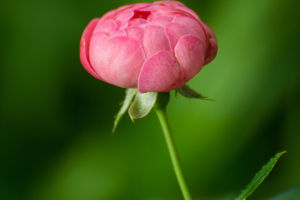In most people's cognition, mushrooms are often mistaken for plants.
However, scientific research has long revealed an amazing fact: mushrooms are not plants but members of the fungal kingdom.
The root of this misunderstanding may be their appearance and growth methods, but a deeper understanding of the characteristics of mushrooms and their fellow fungi will give us a new perspective on this mysterious biological group.
The Classification of Fungi and the Uniqueness of Mushrooms
The fungi kingdom is an independent classification in biology, parallel to the plant kingdom and the animal kingdom. Fungi include many species, such as yeast, mold, and mushrooms.
Although they share some characteristics with plants, such as fixed growth and lack of mobility like animals, fungi are fundamentally different from plants in many ways.
First, the cell wall of fungi is primarily composed of chitin, whereas the cell wall of plants is composed of cellulose. This difference makes the cell structure of fungi closer to that of insects and crustaceans.
Secondly, fungi do not perform photosynthesis and thus cannot produce energy through this process as plants do. Instead, fungi obtain nutrients by decomposing organic matter, which is a heterotrophic method more similar to that of animals.
Mushrooms are a type of macrofungus and one of the most well-known fungi. Their main structures include the mycelium and the fruiting body.
The mycelium is the "body" of the mushroom, usually growing in soil or rotten wood, while the fruiting body is the "cap" of the mushroom that we typically see, used for reproduction and spreading spores.
The Ecological Role and Importance of Mushrooms
Mushrooms and other fungi play very important roles in ecosystems. They are primary decomposers, breaking down organic matter and converting it into nutrients, which are then released back into the soil, thus maintaining the nutrient cycle of the ecosystem.
Additionally, many fungi form symbiotic relationships with plants, such as the mycorrhizal fungi and plant roots. These fungi help plants absorb minerals and water from the soil, while plants provide the fungi with organic compounds produced through photosynthesis.
Mushrooms are not only vital in natural ecosystems but also have a wide range of applications in human life. Many mushrooms are edible and serve as delicious dishes on our tables.
Some mushrooms have medicinal value, such as Ganoderma lucidum and Cordyceps sinensis, which are often used in some traditional medicine.
Modern scientific research has also discovered that mushrooms contain a variety of bioactive substances beneficial to human health, such as enhancing immunity, anti-cancer properties, and antiviral effects.
Why Are Mushrooms Mistaken for Plants?
Given that mushrooms are so different from plants, why are they often mistaken for plants? This may be related to early human understanding and classification methods of nature.
Before the invention of the microscope, people primarily relied on the eye to observe the morphological characteristics of organisms for classification. The fixed growth mode of mushrooms and their vegetation-covered habitats made them easy to classify as plants.
Furthermore, there are similarities between the growth cycle of mushrooms and the seasonal changes of plants. Many mushrooms appear in large numbers in spring and autumn, coinciding with the growth cycles of many plants, further deepening the misunderstanding.
Additionally, the appearance of mushrooms often resembles plant fruits. For example, the umbrella-shaped part of mushrooms looks like a special flower, making it easy for people to mistake them for a type of plant.
Conclusion
As members of the fungi kingdom, mushrooms, despite their superficial similarities to plants in appearance and lifestyle, are fundamentally different in biological classification.
Through scientific research, we have gradually uncovered the mysteries of mushrooms and recognized their critical role in ecosystems and human life. These seemingly ordinary organisms form the cornerstone of Earth's ecology and provide valuable resources for human health and development.
In the future, with the continuous advancement of science, mushrooms and their fellow fungi will continue to reveal more of their fascinating magic and mystery.


